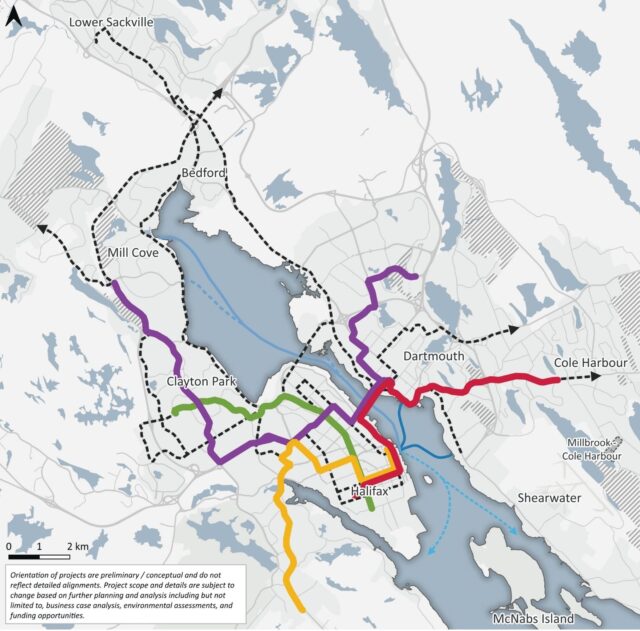Action 3.1.3: Initiate preliminary work for a long-term strategy for Light Rail Transit (LRT) and regional passenger rail.
Passenger rail service has the potential to reshape travel in the Region by providing a very high-capacity form of transit service. Introducing this service is a significant undertaking, should target areas of potential high ridership, and would represent one of the most significant investments in the province’s history. Actions 1.3.1 that introduces inter-municipal transit service and 1.3.2 that introduces Bus Rapid Transit can establish a foundation of ridership and land use for future investments such as regional passenger rail and LRT. A passenger rail feasibility study will have an initial emphasis on connections between Halifax, Bedford, and Windsor and Halifax and Lantz.
Goal 3 | Develop a future-ready transportation system
Strategy 3.1 | Enhance system resiliency and plan for longer-term network connections
Challenges Addressed


Benefits
- Provides more clarity on the long-term viability of passenger rail service.
- Provides sound analysis to inform decision-making not only for the transportation system, but also for housing, healthcare, and economic development.
Status
A request for standing qualification (RFSQ) was issued on August 19. Five pre-qualified bidders have been shortlisted and will be eligible to bid on future scopes of work that comprise the full rail feasibility study.
Common questions
What is the difference between LRT and passenger rail?
Light Rail Transit (LRT) travels in its own right-of-way, powered by overhead electric lines. It can be along, above, or below the street. It offers frequent service, can carry many people, and travels shorter distances (better suited to urban areas).
Passenger Rail usually travels on tracks shared with freight, requiring negotiation from CN. These are usually diesel-powered trains that travel over longer distances (better suited to rural / suburban areas, terminating in an urban area).
What areas will be included in the study?
The study will review the area mirrored in the Regional Transportation Plan. The study will focus on LRT in Halifax and passenger rail in the broader region.


